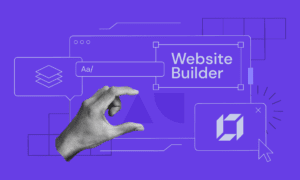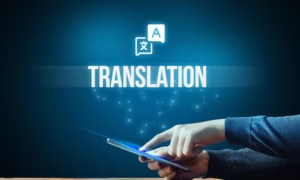Website accessibility isn’t just a compliance check box. It is a vital component of user experience. Accessible websites ensure that all kinds of users, including those who have some disabilities, can navigate and interact with the site content.
Businesses can expand their reach and improve customer satisfaction by prioritizing accessibility features on their website. This also helps them gain a competitive advantage.
Accessibility features that help more website visitors are similar to knowing more languages, making your website reach a wider circle. Studies show that about 15 percent of the global population lives with some form of disability.
We look at how website accessibility contributes to a positive user experience and discuss practical strategies to implement those features.
Understanding Website Accessibility
Website accessibility refers to designing and developing website content and features that are easy for people with diverse abilities to use. This includes users who need help with keyboard navigation or use voice recognition software, as well as those who rely on screen readers.
Accessibility isn’t just about legal compliance or ‘following the law’ but providing an inclusive experience for all website visitors.
Search engines favor accessible websites because they often feature organized content, faster load times, and clean code. And, of course, these search engines, especially the mighty Google, have billions of users who may have different accessibility needs.
Improved Navigation for All Users
A well-structured website benefits everyone, not just users with disabilities. If a website has clear headings, intuitive menus, and fast loading times, it becomes easy to navigate.
For example, ensuring that all interactive elements are accessible by using keyboard shortcuts can significantly enhance usability. Using descriptive headings and subheadings helps screen readers understand the content correctly. An optimized structure also means better loading times.
Alternative Text for Images
Alternative text, also known as alt text, is essential for screen readers as it provides a description of images for the visually impaired. When images lack alt text or have poorly written descriptions, it can create confusion for users who rely on screen readers.
The solution is to make sure that all images have concise yet descriptive alt text. This practice also improves the SEO rankings. As content tends to get old, regular website maintenance can help ensure that all text remains accurate and up-to-date, especially when updating or changing images.
Ensuring video and audio accessibility
Content like videos in podcasts can be highly engaging but might exclude users who have hearing or visual impairment. Without any captions or transcripts, users with disabilities are left out of the content experience.
To address this, captions or subtitles for videos should always be included, and transcripts of audio content should be provided. This will ensure that people with hearing impairment can still consume your content and get more value from your website.
Adding audio and video can slow down the website. Getting high-quality, easy-on-the-pocket design services to optimize these website elements might be a good option for some business owners.
Affordability matters a lot for small businesses, particularly those operating in hubs like Chicago. The intense competition means they have to set aside a good amount for online marketing. According to Affordable Web Design Chicago, business owners must look for design agencies with transparent pricing and no hidden fees.
Enhanced Readability Through Design
Readability is not just about choosing the right words. You need to have accessible forms and colors along with simple layouts. This is because some users may have partial visual impairment and be unable to read text with poor color contrast. The same applies to fonts that are too small.
The website needs to have high contrast, color schemes, and font sizes that improve readability.
Design clarity also benefits users who don’t have the time to investigate and research. Having fewer distractions and a clear design helps in speeding up the process and getting more conversions.
Regular Website Maintenance
Accessibility isn’t just a one-time fix; it requires constant attention. Regular website maintenance helps ensure that all accessibility features remain functional even as the content and design elements get updated.
Issues like outdated elements, broken links, and content that is not optimized can compromise accessibility. Flamingo Agency notes that bug fixes are also a part of the routine maintenance. A professional website designer can help address these aspects and keep your side inclusive.
We know that accessibility features directly benefit users. But it’s also a fact that we are competing with other websites for SEO rankings. The good news is that search engines prioritize websites that are user-friendly and meet accessibility standards. This can be as simple as having proper heading structures and all the elements discussed above.
Accessible websites mean faster loading times and cleaner code with content that is presented in a well-structured format. All of these factors contribute to Google’s higher search engine ranking. If the website is kept well-maintained and regularly updated, its SEO rankings can significantly improve.
Expand Your Audience
As we found out, website accessibility goes much beyond a moral or legal responsibility. It’s an opportunity to enhance user experience and ensure your website remains an inclusive and high-performing investment.
Just like knowing more languages makes you interact with diverse people, having a website that is accessible to more people opens it up and becomes a win-win situation.



































